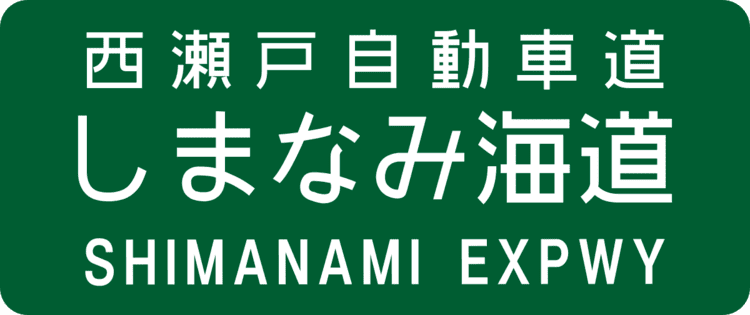Existed: 1979-2006 – present | Length 59.4 km | |
 | ||
Similar Kurushima‑Kaikyō Bridge, Tatara Bridge, Great Seto Bridge, Ōshima, Onomichi Station | ||
6 nishiseto expressway
The Nishiseto Expressway (西瀬戸自動車道, Nishiseto Jidōsha-dō), often called the Shimanami Kaidō (しまなみ海道) is an expressway in Japan that connects Onomichi, Hiroshima and Imabari, Ehime, going through nine of the Geiyo Islands, including Ōshima, Umashima, and Innoshima. The road and multiple bridge crossing across the Seto Inland Sea is one of the three main transportation links of the Honshū–Shikoku Bridge Project constructed between the islands of Honshu and Shikoku.
Contents
Map of Shimanami Kaido, Japan
The expressway contains ten bridges, including the Kurushima-Kaikyō Bridge, the world's longest series of suspension bridges, and the Tatara Bridge, the world's second longest cable-stayed bridge. The route is famed for its scenic views and can be crossed by bicycles, mopeds and pedestrians as well as cars. It was opened on May 1, 1999, and is 59.4 kilometers long, sporting four lanes with a separated path for pedestrians and cyclists.
Cycle Tourism
The road and bridge route was designed with an integrated cycle lane linking Onomichi in Hiroshima Prefecture with Imabari in Ehime Prefecture. The cycle route is approximately 70 km in length including bridge access ramps and since opening has become one of Japan's most popular long-distance cycle routes.
As accessing the Shin-Onomichi bridge involves a steep climb, cyclists are encouraged to use a short ferry between Onomichi and Mukaishima, but all other bridges on the route feature a designated cycle path. Bicycle rental and drop off locations are available along the route.
